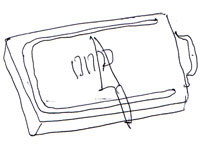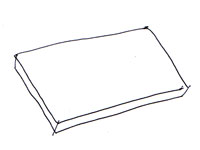Edmund Burke's
A Philosophical Inquiry into the origin of our ideas of The Sublime and Beautiful, is apparently, a classic. Therefore, it is
available online for free (there is no such thing as a free lunch? pfft!).
On Beauty, he writes:
"I call beauty a social quality; for where women and men, and not only they, but when other animals give us a sense of joy and pleasure in beholding them (and there are many that do so), they inspire us with sentiments of tenderness and affection towards their persons; we like to have them near us, and we enter willingly into a kind of relation with them, unless we should have strong reasons to the contrary. But to what end, in many cases, this was designed, I am unable to discover; for I see no greater reason for a connection between man and several animals who are attired in so engaging a manner, than between him and some others who entirely want this attraction, or possess it in a far weaker degree. But it is probable that Providence did not make even this distinction, but with a view to some great end; though we cannot perceive distinctly what it is, as his wisdom is not our wisdom, nor our ways his ways."
Burke's writing is stunningly simple (read-- easy to understand). Here is his belief on tragedy:
"Choose a day on which to represent the most sublime and affecting tragedy we have; appoint the most favorite actors; spare no cost upon the scenes and decorations; unite the greatest efforts of poetry, painting, and music; and when you have collected your audience, just at the moment when their minds are erect with expectation, let it be reported that a state criminal of high rank is on the point of being executed in the adjoining square; in a moment the emptiness of the theatre would demonstrate the comparative weakness of the imitative arts, and proclaim the triumph of the real sympathy."
Burke writes that "it is probable that the standard both of reason and taste is the same in all human creatures."
There are some deviations, of course, but these deviations are unique to that individual and often times, the individual knows that his notion of taste or beauty is different from that of society's. "The pleasure of all the senses, of the sight, and even of the taste, that most ambiguous of the senses, is the same in all, high and low, learned and unlearned."
George P. Landow is a history professor at Brown University. He synthesizes the work of a few people (including Burke) in his article,
Ruskin's theory of Typical Beauty. It's boring as hell.













